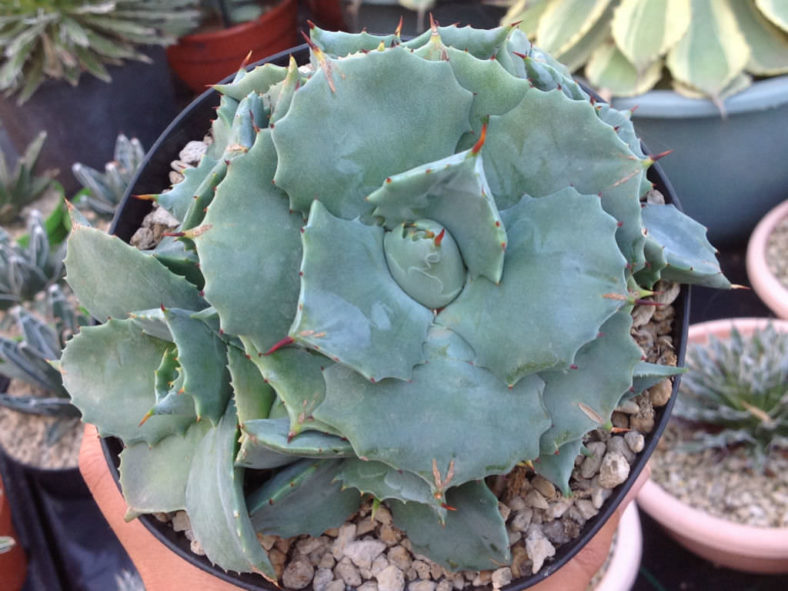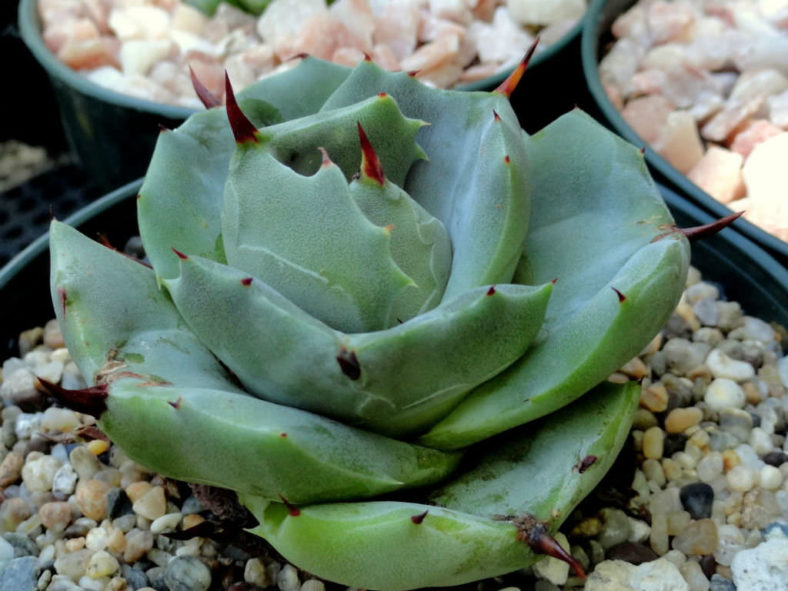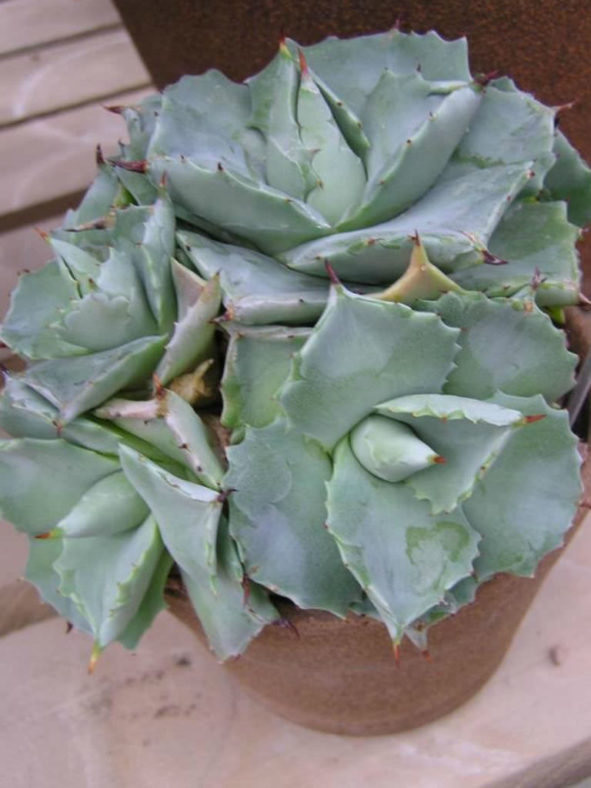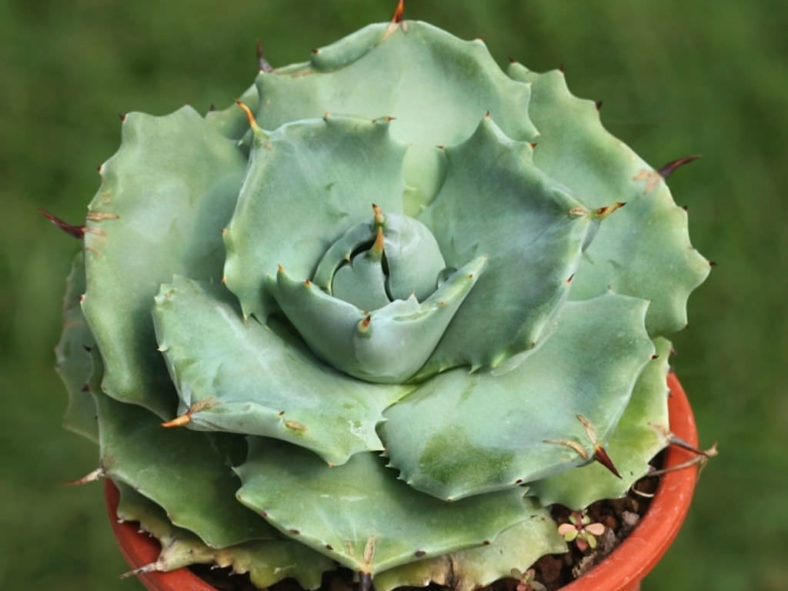Scientific Name
Agave potatorum 'Shoji-Raijin'
Common Name(s)
Blue Rose, Blue Rose Agave, Miniature Agave, Silver Star, Silver Star Agave
Synonym(s)
Agave potatorum f. minima, Agave potatorum var. verschaffeltii 'Shoji-Raijin'
Scientific Classification
Family: Asparagaceae
Subfamily: Agavoideae
Genus: Agave
Origin
Agave potatorum 'Shoji-Raijin' is a cultivar of Agave potatorum selected in Japan.
Description
Agave potatorum 'Shoji-Raijin' is a small succulent that forms beautiful compact rosettes of fleshy, dusty-blue leaves. The rosettes can grow up to 4.8 inches (12 cm) in diameter and produce offsets, forming a small clump with age. The leaves have a few short marginal spines and a reddish, slightly twisted terminal spine.

How to Grow and Care for Agave potatorum 'Shoji-Raijin'
Light: Like all Agaves, this plant requires full sun to partial shade. If you are growing A. potatorum 'Shoji-Raijin' indoors, choose a bright, sunny window with as much sun as possible. From spring to fall, it loves going outside.
Soil: A. potatorum 'Shoji-Raijin' will tolerate most soils as long as they have good drainage, but it prefers sandy or rocky soil.
Hardiness: During the growing season, it likes warm temperatures, while in winter, when resting, this succulent enjoys cooler temperatures. A. potatorum 'Shoji-Raijin' can withstand temperatures as low as 25 to 50 °F (-3.9 to 10 °C), USDA hardiness zones 9b to 11b.
Watering: From spring to fall, water thoroughly when the soil becomes dry. In winter, water sparingly about once a month. Plants in containers require more frequent watering than those in the ground.
Fertilizing: Give your A. potatorum 'Shoji-Raijin' a small amount of fertilizer in the spring during the first two years. Established plants seem to take care of themselves.
Repotting: If you notice your A. potatorum 'Shoji-Raijin' becoming pot-bound, repot it with fresh soil in a new pot slightly larger than the old one. Give the plant a week or so to readjust before you water it again.
Propagation: Since it can take years to produce seeds, A. potatorum 'Shoji-Raijin' is usually propagated by offsets. The best time to remove the offsets is in spring and summer. Sow the seeds in spring.
Learn more at How to Grow and Care for Agave.
Toxicity of Agave potatorum 'Shoji-Raijin'
A. potatorum 'Shoji-Raijin' is not toxic to humans but may be mildly poisonous to children and pets.
Links
- Back to genus Agave
- Succupedia: Browse succulents by Scientific Name, Common Name, Genus, Family, USDA Hardiness Zone, Origin, or cacti by Genus
Photo Gallery
Click on a photo to see a larger version.


